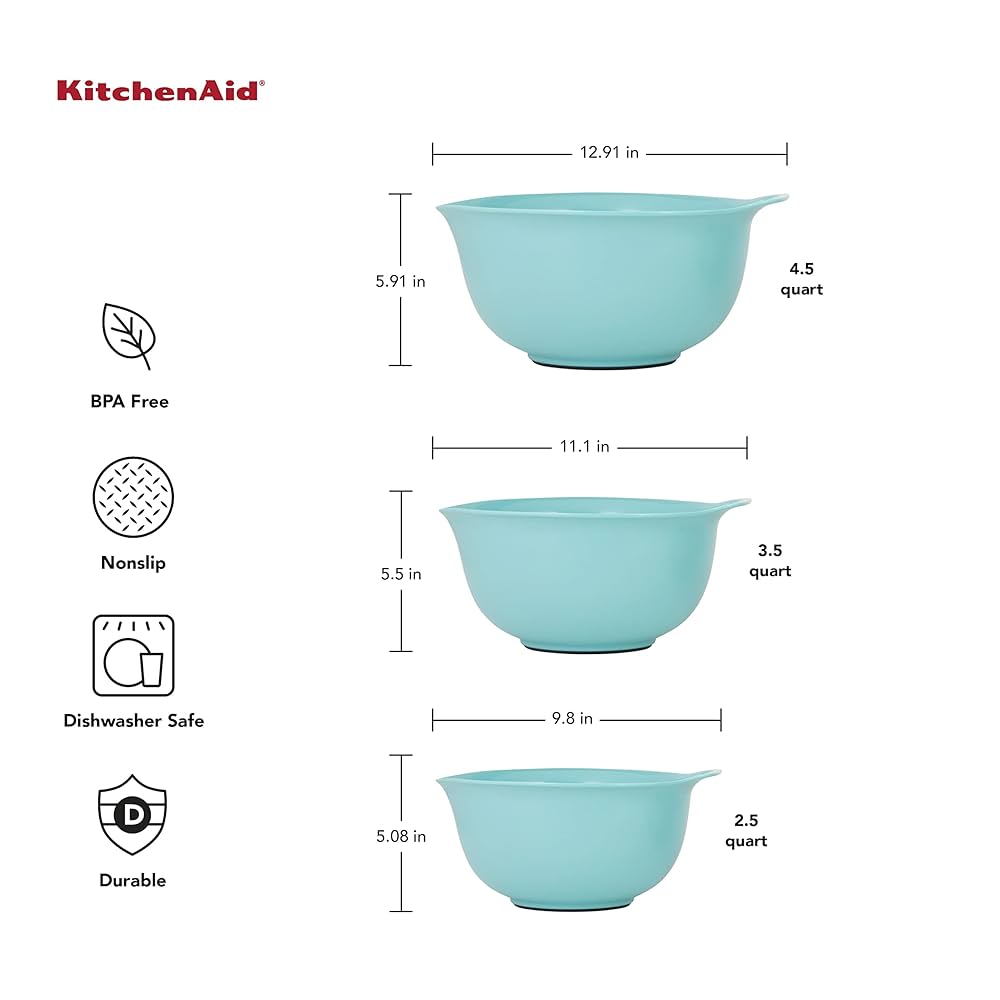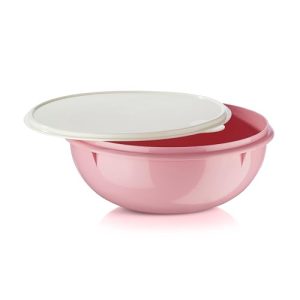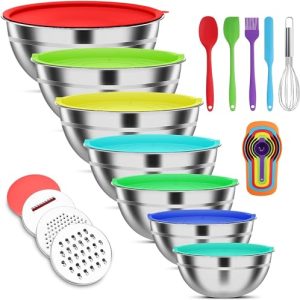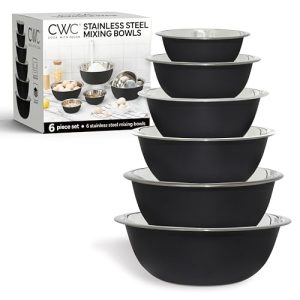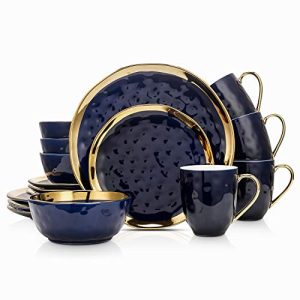When you’re mixing ingredients for your favorite recipes, the last thing you want to worry about is harmful chemicals in your kitchen tools. If you’ve been wondering, “Are KitchenAid mixing bowls BPA free?” you’re not alone.
Knowing what’s in your mixing bowls matters for your health and peace of mind. You’ll discover the truth about KitchenAid’s products and why choosing the right bowl can make a difference in your cooking experience. Keep reading to find out how to keep your kitchen safe and your meals delicious.
Material Composition
KitchenAid mixing bowls are made from various materials. Each material offers different benefits. It is important to understand what these materials are.
This helps you know if the bowls are safe and suitable for your kitchen needs.
Types Of Materials Used
KitchenAid mixing bowls come in different materials. These include stainless steel, glass, and ceramic. Each type has unique features.
- Stainless Steel:Durable and resists rust.
- Glass:Allows you to see inside the bowl while mixing.
- Ceramic:Offers a classic look and good heat retention.
Presence Of Bpa In Components
BPA is a chemical sometimes found in plastics. It can affect health if ingested in large amounts. It is important to know if KitchenAid bowls contain BPA.
| Material | BPA Content |
| Stainless Steel | No BPA |
| Glass | No BPA |
| Ceramic | No BPA |
| Plastic Parts (such as lids) | Usually BPA-Free |
Most KitchenAid mixing bowls and their parts are free from BPA. This makes them safe for food use.
Safety Standards
KitchenAid mixing bowls are made with materials that focus on user safety. Understanding their safety standards helps you trust the product’s quality.
One key concern is whether these bowls are free from harmful chemicals like BPA. This guide looks at their certifications and compliance with food safety rules.
Certifications And Testing
KitchenAid mixing bowls undergo strict testing to meet safety certifications. These tests check for chemical safety and durability.
- Materials tested for BPA presence and other toxins
- Third-party lab testing to ensure safety
- Compliance with industry standards for food contact
- Regular quality control during manufacturing
Compliance With Food Safety Regulations
KitchenAid ensures their mixing bowls meet food safety regulations. These rules protect consumers from harmful substances.
| Regulation | Requirement | KitchenAid Compliance |
| FDA | No BPA in food contact materials | Meets standard |
| EU Food Contact Materials | Limits on chemical migration | Fully compliant |
| Prop 65 (California) | Warning for harmful chemicals | No warning needed |
Durability And Reliability
Kitchenaid mixing bowls are designed to last for years. They are made with strong materials that resist wear and tear.
These bowls offer reliable performance for many kitchen tasks. Their build quality helps prevent cracks and breaks.
Resistance To Stains And Odors
Kitchenaid mixing bowls resist stains from colorful ingredients like berries or spices. This keeps the bowls looking clean over time.
They also do not absorb odors from strong foods. This means the bowls stay fresh and do not affect the taste of new recipes.
- Non-porous surface prevents stains
- Easy to clean with regular washing
- No lingering smells after use
Impact Of Heat And Cold
Kitchenaid bowls handle both hot and cold temperatures well. They can be used for mixing warm dough or chilling ingredients.
The materials do not warp or crack under temperature changes. This makes them safe for different kitchen tasks.
- Safe for cold storage in the fridge
- Withstands heat from warm mixtures
- Durable against sudden temperature changes

Credit: www.ebay.com
Customer Experiences
Many people want to know if Kitchenaid mixing bowls are safe to use. Customers often share their thoughts about the bowls’ safety and performance.
This section looks at what users say about the bowls’ BPA status and how well they work in the kitchen.
User Reviews On Safety
Several users confirm that Kitchenaid mixing bowls are BPA free. They feel safe using these bowls with food. Many appreciate knowing the material does not contain harmful chemicals.
Some customers also mention that the bowls are made from high-quality plastic or stainless steel. This adds to their trust in the product’s safety for everyday cooking.
- Most users report no health concerns with the bowls
- Parents like using them for children’s food preparation
- Customers trust the brand’s safety claims
Feedback On Performance
Users often praise the bowls for their sturdy build and ease of use. They find mixing ingredients smooth and comfortable. The size options are also a plus for many.
Some customers highlight that the bowls fit well with their stand mixers. This improves their baking and cooking experience. Cleaning the bowls is simple, which adds to their satisfaction.
- Bowls are strong and durable
- Good fit for Kitchenaid stand mixers
- Easy to clean by hand or dishwasher
Comparing Alternatives
Choosing the right mixing bowl affects your cooking and health. BPA-free options are safer for food use. Let’s compare some alternatives to KitchenAid bowls.
This guide reviews other BPA-free mixing bowls and the pros and cons of different materials.
Other Bpa-free Mixing Bowls
Many brands offer BPA-free mixing bowls. These bowls use safe plastics or other materials that avoid BPA. Some popular choices include stainless steel, glass, and silicone bowls.
- Stainless steel bowls are durable and do not contain BPA.
- Glass bowls are non-toxic and easy to clean.
- Silicone bowls are flexible and lightweight.
- Plastic BPA-free bowls are affordable but can scratch easily.
Pros And Cons Of Different Materials
| Material | Pros | Cons |
|---|---|---|
| Stainless Steel | Durable, lightweight, BPA-free, resists stains | Can dent, not microwave safe |
| Glass | Non-toxic, easy to clean, microwave safe | Heavy, can break if dropped |
| Silicone | Flexible, lightweight, BPA-free, heat resistant | Can retain odors, less stable on surfaces |
| Plastic (BPA-Free) | Affordable, lightweight, many sizes | Scratches easily, may stain, less durable |
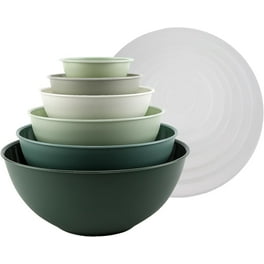
Credit: www.walmart.com
Maintenance Tips
Keeping your KitchenAid mixing bowls clean and in good shape helps them last longer. Proper care also ensures safe food use.
Simple maintenance steps can protect the bowls from damage and stains. Follow these tips for daily use.
Cleaning Guidelines
Wash your KitchenAid mixing bowls soon after use. This stops food from hardening and makes cleaning easier.
Use warm water and mild dish soap to clean the bowls. Avoid harsh chemicals that might damage the bowl’s surface.
- Hand wash with a soft sponge or cloth
- Do not use abrasive scrubbers or steel wool
- Rinse thoroughly to remove all soap
- Dry with a soft towel to prevent water spots
- Check if your bowl is dishwasher safe before using
Storage Recommendations
Store your mixing bowls in a clean, dry place. Keep them away from heavy items that could cause dents or scratches.
Stack bowls carefully if you keep several. Place soft cloth or paper towels between them to avoid scratches.
- Keep bowls in a cool, dry cabinet or shelf
- Do not store with sharp objects nearby
- Use bowl covers to keep dust out
- Stack bowls with padding to prevent damage
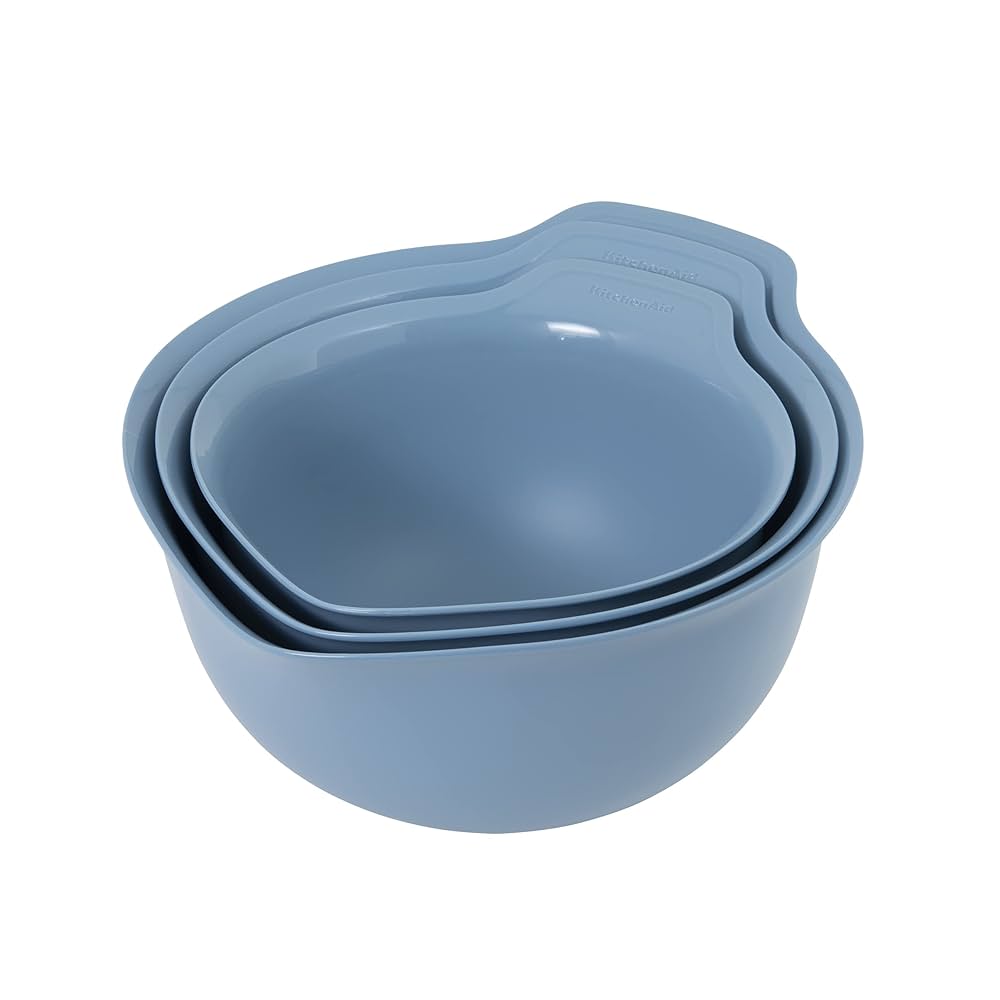
Credit: www.amazon.ca
Frequently Asked Questions
Are Kitchenaid Mixing Bowls Bpa Free?
Yes, Kitchenaid mixing bowls are BPA free. They are made with high-quality materials that ensure safety and durability. BPA-free products are essential for health-conscious consumers who want to avoid harmful chemicals. Kitchenaid prioritizes safety and quality in its kitchenware, making them a trusted choice for many households.
What Materials Are Kitchenaid Mixing Bowls Made Of?
Kitchenaid mixing bowls are crafted from high-quality stainless steel and durable plastic. Stainless steel is rust-resistant and long-lasting, while the plastic used is BPA free. These materials ensure the bowls are safe for food contact and easy to clean. Kitchenaid’s materials prioritize both safety and performance.
Are Kitchenaid Bowls Safe For Food Storage?
Yes, Kitchenaid bowls are safe for food storage. They are designed with materials that prevent leaching of chemicals. The BPA-free construction ensures that stored food remains uncontaminated. Additionally, their durable design allows for versatile use, including mixing and storing a variety of foods safely.
Can Kitchenaid Mixing Bowls Be Used In Microwaves?
Kitchenaid plastic mixing bowls are generally not microwave safe. It’s important to check specific product instructions before using them in microwaves. Stainless steel bowls should never be used in microwaves, as metal can cause sparks. Always ensure the bowl material is suitable for microwaving to avoid damage.
Conclusion
KitchenAid mixing bowls do not contain BPA. This makes them a safe choice for your kitchen. You can mix food without worry about harmful chemicals. The brand focuses on quality and safety for users. Durable materials ensure long-lasting use and easy cleaning.
Choosing BPA-free bowls helps protect your health. Simple, safe, and reliable—that’s what you get with KitchenAid. Safe mixing starts with the right tools. Trust in products designed with your wellbeing in mind.

